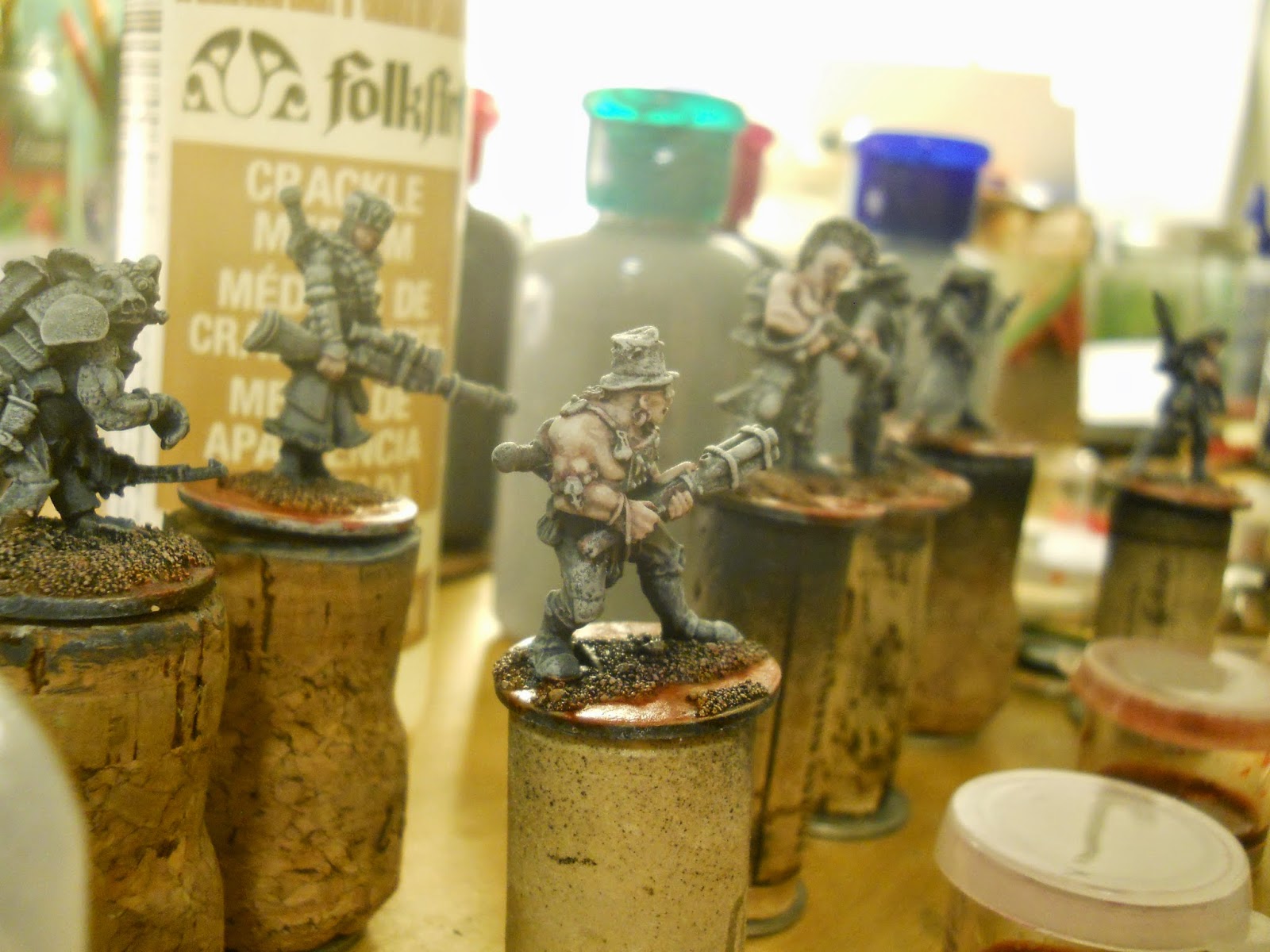I've been making a concious effort of late to diversify this nerdy little blog of mine to encompass more of my hobbies beyond the collecting and painting of weird homunculi. One such hobby that I've been getting my teeth into lately is book binding.
The method I'm going to show you today, perfect-binding, is an excellent method for beginners because it is stitchless, and therefore does not require a lot of specialized materials like waxed thread, linen tapes, or a book binding jig. In fact, all it requires is your paper, some pva glue or book binding paste (easily made using cake flour and water), your cover stock, and something to clamp it all together.
What follows is a basic perfect-binding tutorial, demonstrated with a set of notebooks I made for my favorite ladyperson as a Saturnalia gift. If you find this interesting, there are myriad further tutorials to explore all over the internet. This one in particular is charmingly nerdy.
 |
| Makeshift pressing assembly and a needle file for scoring |
The first step is to assemble your text block. I made mine straight from packages of filler paper. I used two packages of graph paper divided into four text blocks, and three packages of regular line paper arranged into three text blocks. I made sure that the holes in the paper were on the right side of the block, opposite the spine, so they could be trimmed away later.
Above, you can see the first text block squared off and clamped into place. Eventually, I plan on building myself a basic (very basic) binding press, but for now I just made do with some scrap plywood and some clamps.
Once it's clamped in, it's a good idea to score the spine of the book with either an xacto knife or a file. This promotes a stronger bond with the glue. Apply the glue in thin coats using an old brush. I find that two or three coats is sufficient.
 |
| The first four glued text blocks |
While waiting for the glue to dry, I prepared my covers. These were made using artist's vellum. I trimmed each sheet to the width of the final notebook, then taped the strip of waste paper accross the middle of each cover as a mask. Then, using an old toothbrush and some extra W&N ink mixes I had sitting around from my last painting project, I generously flicked a different color of ink on each cover. Once the ink was dry, I removed the mask to reveal a striking white stripe, perfect for writing down the class that the notebook is used for.
 |
| Covers in progress on my capacious workshop table. |
Gluing on the covers can be a little tricky. Start by lining the cover up with your text block so that it's front edge lies just beyond your final trim width. Crease it so that it wraps around the spine, and then unfold the cover so it lies open. Apply a final layer of glue to the spine and then refold the cover. I like to use a bone folder or the back of a spoon to press the cover tightly along the spine. Refold the final crease and clamp the whole thing back in your press assembly. Once clamped, I go over the spine several more times with the spoon/bone folder to make sure that it adheres along its entire length. When satisfied, leave in the press until completely dry.
 |
| Untrimmed notebooks with covers applied |
The final step is to trim your notebook to the final desired size. To do this, bookbinders use a very specialized tool called a binding plow, which is a sharp blade used in conjuntion with a guide on a finishing press to make an evenly trimmed edge on a finished book. These are very expensive and even DIY variations on the tool can get quite involved. Luckily, a passable alternative is to use a heavy-duty metal ruler or carpenter's square as a guide (clamped in place for greater stability) and a nice, sharp exacto blade.
Clamp your metal guide so that the edge matches precisely with your final trim size. Keeping your exacto blade flush with the guide, run it down the length of the book under very light pressure—don't use much more than the weight of your hand here, or else you will risk the edge becoming uneven. Light pressure and a sharp blade should be enough to cut through 1-3 sheets per pass. Because of this, the trimming process can be very tedious (though I actually find it pretty relaxing). Stick with it. The reward for your patience is a miraculously smooth edge.
 |
| The final notebooks, at home on my favorite ladyperson's favorite bookshelf |
Any questions about this process? Leave a comment and I'll see if I can address it in a follow-up tutorial, wherein I will be binding my printout of the Labyrinth Lord rulebook.














































